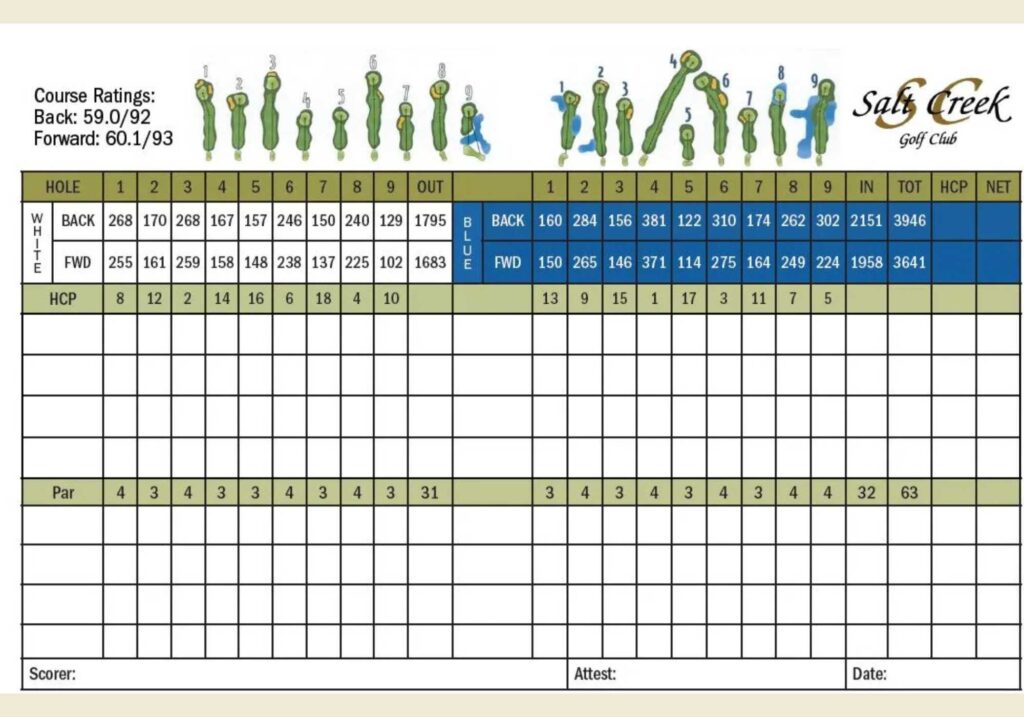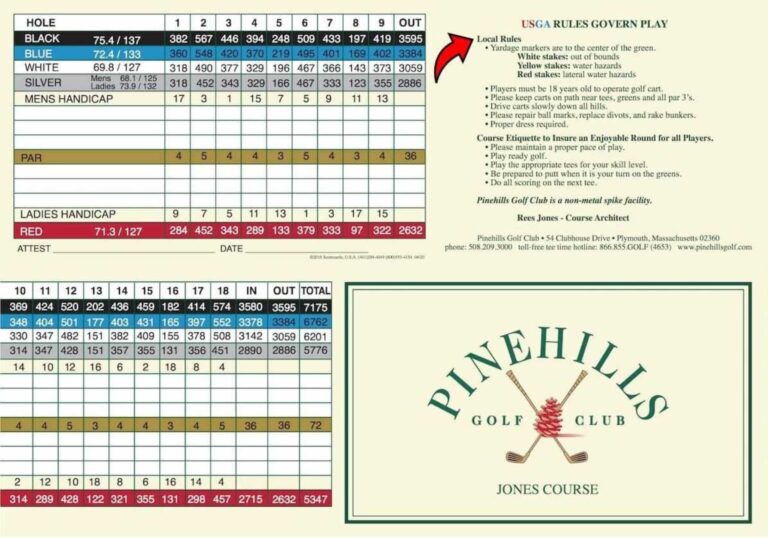Have you ever pulled out a golf scorecard, glanced at the numbers and colors, and just scribbled down your scores without really knowing what everything meant? If so, you’re not alone. But learning to read your scorecard properly can make your rounds smoother, help you strategize better, and even speed up play. Here’s your clear, friendly guide to understanding every part of this essential piece of golf gear.
Why Scorecards Matter
Your scorecard is more than just a place to write down numbers. It’s a map of the course, a performance tracker, and a strategy tool all in one. The next time you tee it up, you’ll feel more confident knowing exactly what each section tells you.
1. The Basics: Hole Numbers, Par, and Yardages
Hole Numbers
- Listed from 1 to 18 in order.
- Some courses with only 9 holes will list holes 1-9 and have a second line if playing twice for 18.
Par
- Shows the expected number of strokes for each hole.
- Typically:
- Par 3: Short holes you’re expected to reach in one shot and putt twice.
- Par 4: Reach in two shots, two putts.
- Par 5: Reach in three shots, two putts.
- Par 3: Short holes you’re expected to reach in one shot and putt twice.
Knowing the par helps you manage expectations and plan your approach.
Yardages
- Each hole shows yardages from different tees:
- Back/Championship Tees (Black or Blue): Longest distance, usually for low-handicap or professional players.
- Middle Tees (White): Most common for average male golfers.
- Forward/Senior/Ladies Tees (Gold or Red): Shorter distances for easier playability.
- Back/Championship Tees (Black or Blue): Longest distance, usually for low-handicap or professional players.
Tip: Play from the tees that suit your driving distance and skill level to keep the game fun and manageable.

2. Stroke Index or Handicap Rating
- Often listed as “Hcp” or “SI” on your card.
- Ranks holes by difficulty:
- 1 = hardest hole on the course.
- 18 = easiest hole on the course.
- 1 = hardest hole on the course.
How it’s used:
If your handicap is 10, you get an extra stroke on the ten hardest holes (stroke index 1-10). For higher handicaps (e.g. 20), you’d get one stroke on each hole plus a second stroke on holes indexed 1-2.
3. Keeping Your Score
- Write down the number of strokes you took on each hole in the box provided.
- At the end of the front nine, total it under “Out.”
- At the end of the back nine, total it under “In.”
- Add both to get your 18-hole total.
If you track stats, use extra columns for:
- Fairways hit (✓ or X)
- Greens in regulation (GIR)
- Putts per hole
This helps identify areas to practice for improvement.

4. Course Rating and Slope
Usually printed somewhere on your scorecard, these numbers tell you:
- Course Rating: Difficulty for a scratch golfer.
- Slope: Relative difficulty for a bogey golfer compared to a scratch golfer (standard slope is 113).
These are important for calculating handicap differentials after your round.
5. Local Rules and Notes
Flip the card over or check the bottom section for:
- Out of Bounds markers (OB)
- Hazard definitions
- Cart path rules
- Preferred lies or special course conditions
Always read these before you start to avoid penalty strokes or confusion mid-round.
6. Using Your Scorecard for Strategy
Your scorecard isn’t just a formality. It can help you:
- Plan your tee shots by seeing hole yardages and deciding which clubs to use.
- Understand where to play conservatively (on longer or harder holes) and where to attack (on shorter holes).
- Prepare mentally by reviewing upcoming hole pars and difficulties to stay composed and avoid rushed decisions.
Final Thoughts
Next time you’re handed a scorecard on the first tee, take a moment to read through it carefully. Knowing what each section means will make you feel more prepared and confident throughout your round. Plus, it makes scoring easier and helps pace of play when you’re not fumbling to figure things out after each hole.
Your Turn
Have you ever misunderstood something on your scorecard mid-round? Or do you have any tips for using it more effectively? Share your experiences below – your insights might help a fellow golfer on their journey.
